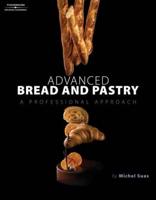Publisher's Synopsis
Olive oil is the major edible vegetable oil of the Mediterranean countries and Portugal. It is also, perhaps, the oldest reported crop in history. The olive tree is ca pable of existing in a harsh climate on poor soils, and trees 500 years old still bear fruit. The oil itself is much prized for its flavor and aroma. The highest-quality oils are obtained, without solvent extraction, from fresh and healthy fruits. Although the subtle sensory characteristics of olive oil account for its popularity, despite a high market price, increasing interest has been given to its nutritional properties, which are believed to play a large role in the so-called "Mediterranean Diet. " In this book, we provide a wealth of detail about the analysis and properties of olives and their oil. After an introduction to olive oil and to technological aspects, we include a section on biochemistry because, of course, the unique properties of the oil are based on the biochemistry of the olive fruit. This applies not only to the main constituents-the various triacylglycerols-but also to minor sensory components that are derived largely from the lipoxygenase catabolic pathway. Following are chapters that deal with the analysis of olive oil from the standpoint of general methodology, and later chapters describe detailed techniques. The sophisticated analytical methods have to be evaluated by the use of math ematical procedures for characterization.









